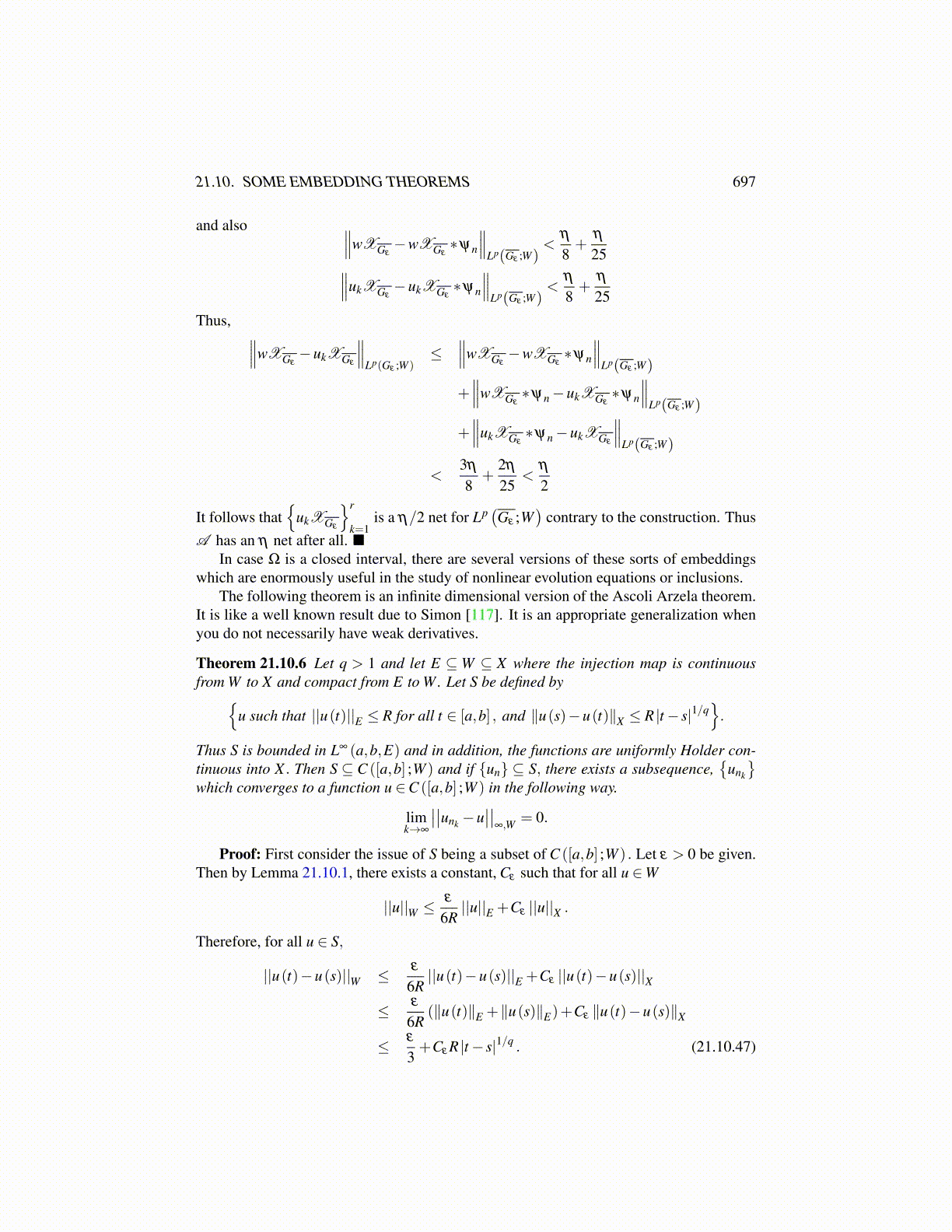
21.10. SOME EMBEDDING THEOREMS 697
and also ∥∥∥wXGε−wXGε
∗ψn
∥∥∥Lp(Gε ;W)
<η
8+
η
25∥∥∥ukXGε−ukXGε
∗ψn
∥∥∥Lp(Gε ;W)
<η
8+
η
25
Thus, ∥∥∥wXGε−ukXGε
∥∥∥Lp(Gε ;W )
≤∥∥∥wXGε
−wXGε∗ψn
∥∥∥Lp(Gε ;W)
+∥∥∥wXGε
∗ψn−ukXGε∗ψn
∥∥∥Lp(Gε ;W)
+∥∥∥ukXGε
∗ψn−ukXGε
∥∥∥Lp(Gε ;W)
<3η
8+
2η
25<
η
2
It follows that{
ukXGε
}r
k=1is a η/2 net for Lp
(Gε ;W
)contrary to the construction. Thus
A has an η net after all.In case Ω is a closed interval, there are several versions of these sorts of embeddings
which are enormously useful in the study of nonlinear evolution equations or inclusions.The following theorem is an infinite dimensional version of the Ascoli Arzela theorem.
It is like a well known result due to Simon [117]. It is an appropriate generalization whenyou do not necessarily have weak derivatives.
Theorem 21.10.6 Let q > 1 and let E ⊆W ⊆ X where the injection map is continuousfrom W to X and compact from E to W. Let S be defined by{
u such that ||u(t)||E ≤ R for all t ∈ [a,b] , and ∥u(s)−u(t)∥X ≤ R |t− s|1/q}.
Thus S is bounded in L∞ (a,b,E) and in addition, the functions are uniformly Holder con-tinuous into X . Then S ⊆ C ([a,b] ;W ) and if {un} ⊆ S, there exists a subsequence,
{unk
}which converges to a function u ∈C ([a,b] ;W ) in the following way.
limk→∞
∣∣∣∣unk −u∣∣∣∣
∞,W = 0.
Proof: First consider the issue of S being a subset of C ([a,b] ;W ) . Let ε > 0 be given.Then by Lemma 21.10.1, there exists a constant, Cε such that for all u ∈W
||u||W ≤ε
6R||u||E +Cε ||u||X .
Therefore, for all u ∈ S,
||u(t)−u(s)||W ≤ ε
6R||u(t)−u(s)||E +Cε ||u(t)−u(s)||X
≤ ε
6R(∥u(t)∥E +∥u(s)∥E)+Cε ∥u(t)−u(s)∥X
≤ ε
3+Cε R |t− s|1/q . (21.10.47)